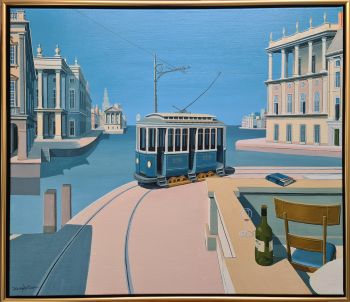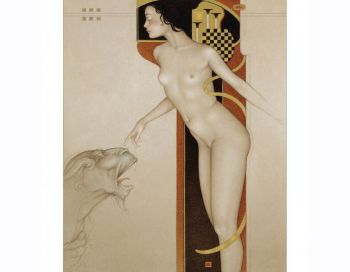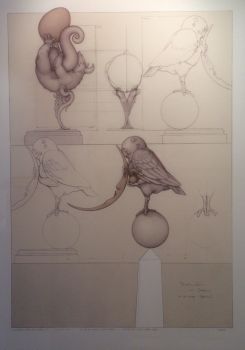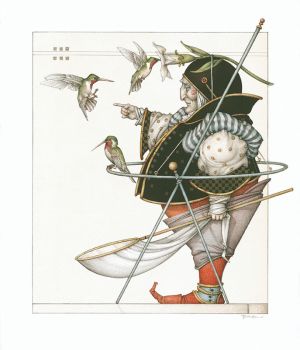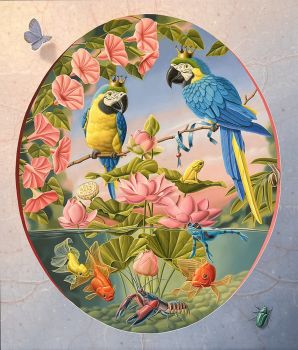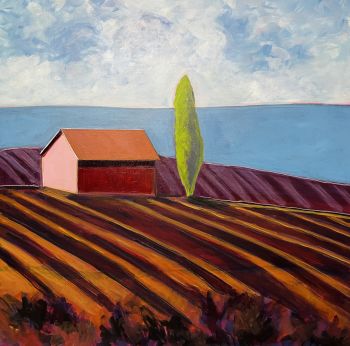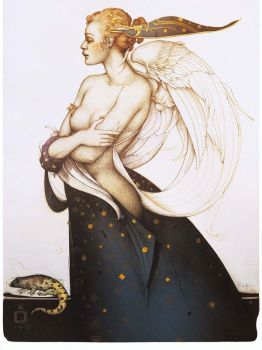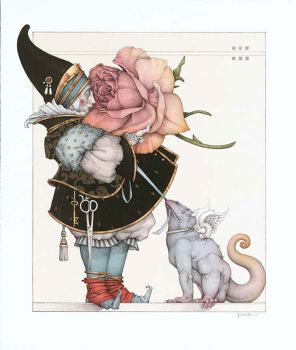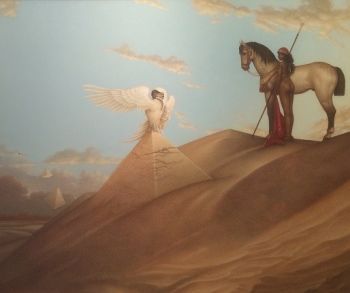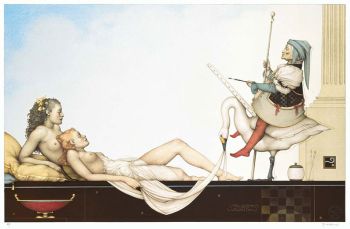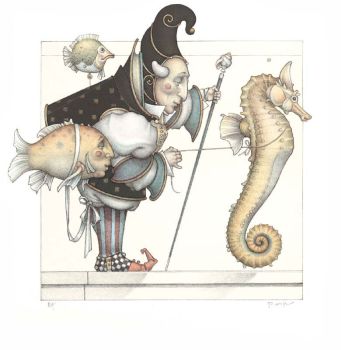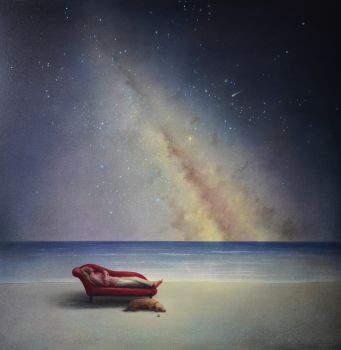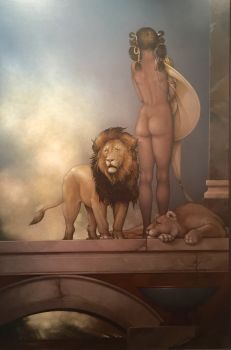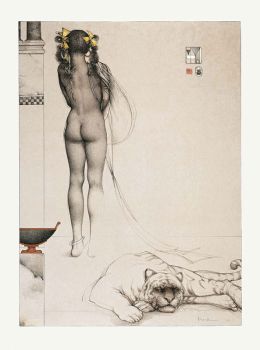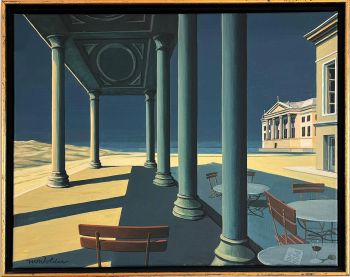Enchanting Reality: The Allure of Magic Realism in Art
Magic realism in art weaves the extraordinary into the everyday, inviting viewers to journey beyond the ordinary and embrace the enchanting mysteries within the familiar. In this article we explain what Magical Realism is and how you can best recognize these works of art and where you can buy these works of art.
What is Magic Realism and what are the characteristics?
Magic realism is an artistic style that combines elements of the fantastic with the realistic to create a world that is both familiar and surreal. It emerged as a literary movement in Latin America in the mid-20th century, but has since spread to other artistic forms, including visual art.
Magic realism in art is characterized by the use of vivid colors, dreamlike imagery, and the unexpected juxtaposition of elements.
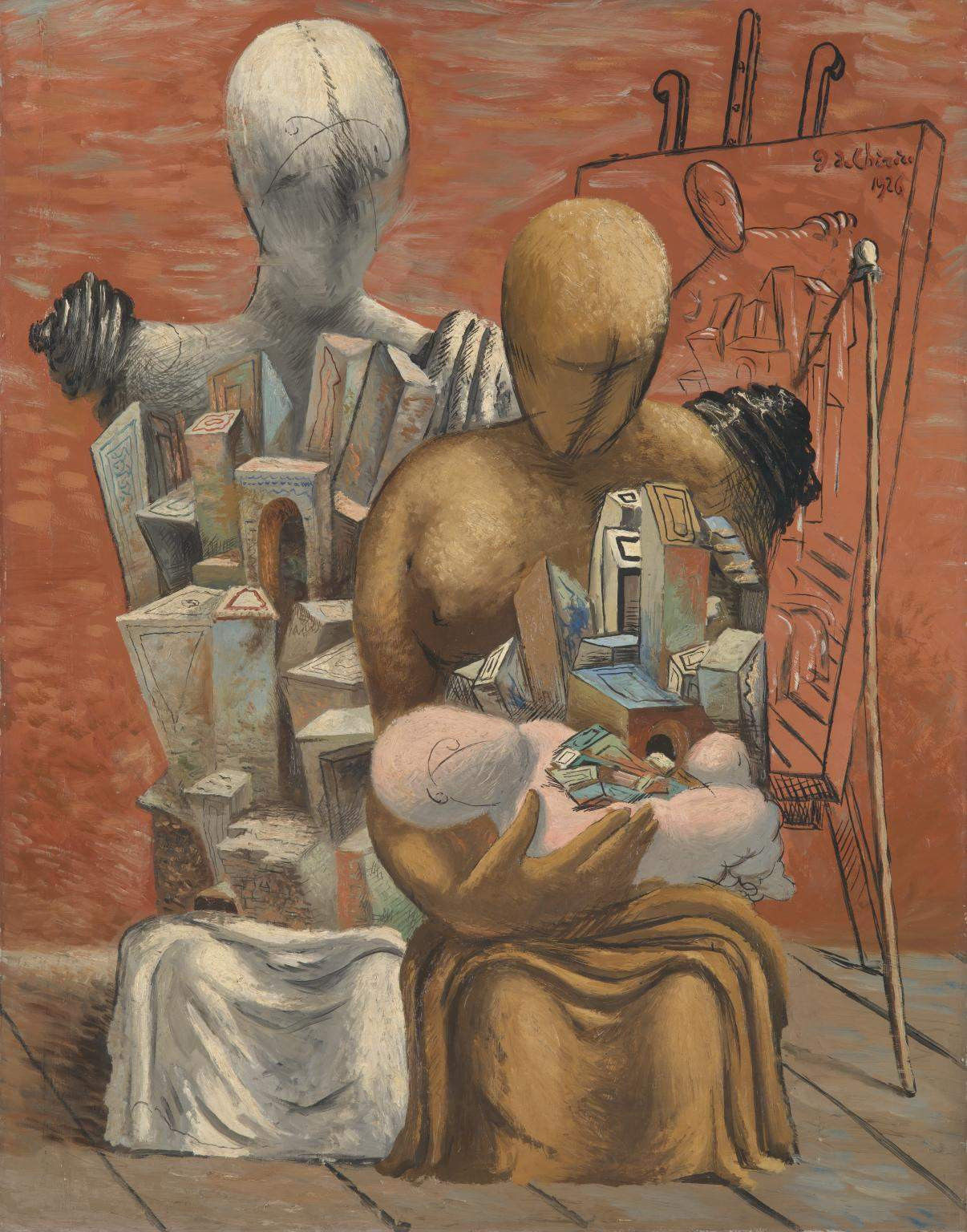 An early magic realistic painting by Giorgio de Chirico, The Painter's Family (1926), Tate
An early magic realistic painting by Giorgio de Chirico, The Painter's Family (1926), Tate
At its core, magic realism is about blurring the boundaries between the real and the imaginary. This can take many forms in visual art, from surreal landscapes that defy the laws of physics to everyday scenes that are imbued with a sense of wonder and mystery.
Well known artists using Magic Realism
Frido Kahlo; One of the most famous examples of magic realism in art is the work of the Mexican painter Frida Kahlo. Kahlo's paintings often feature surreal imagery, such as animals with human faces or disembodied limbs, but they are rooted in her own experiences and emotions.
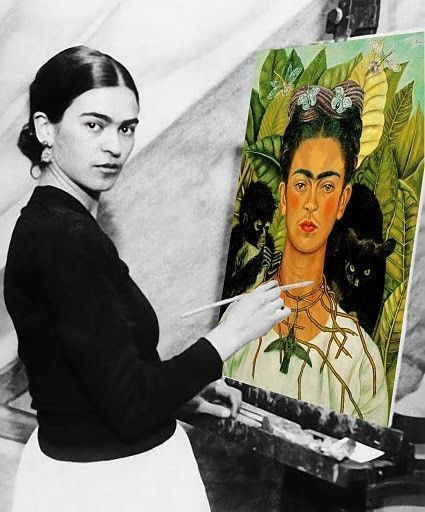 Frida Kahlo at work on a self-portrait with Magical Realistic features
Frida Kahlo at work on a self-portrait with Magical Realistic features
René Magritte; Another artist known for his use of magic realism is the Belgian surrealist René Magritte. Magritte's paintings often feature everyday objects, such as apples or bowler hats, in unexpected contexts.
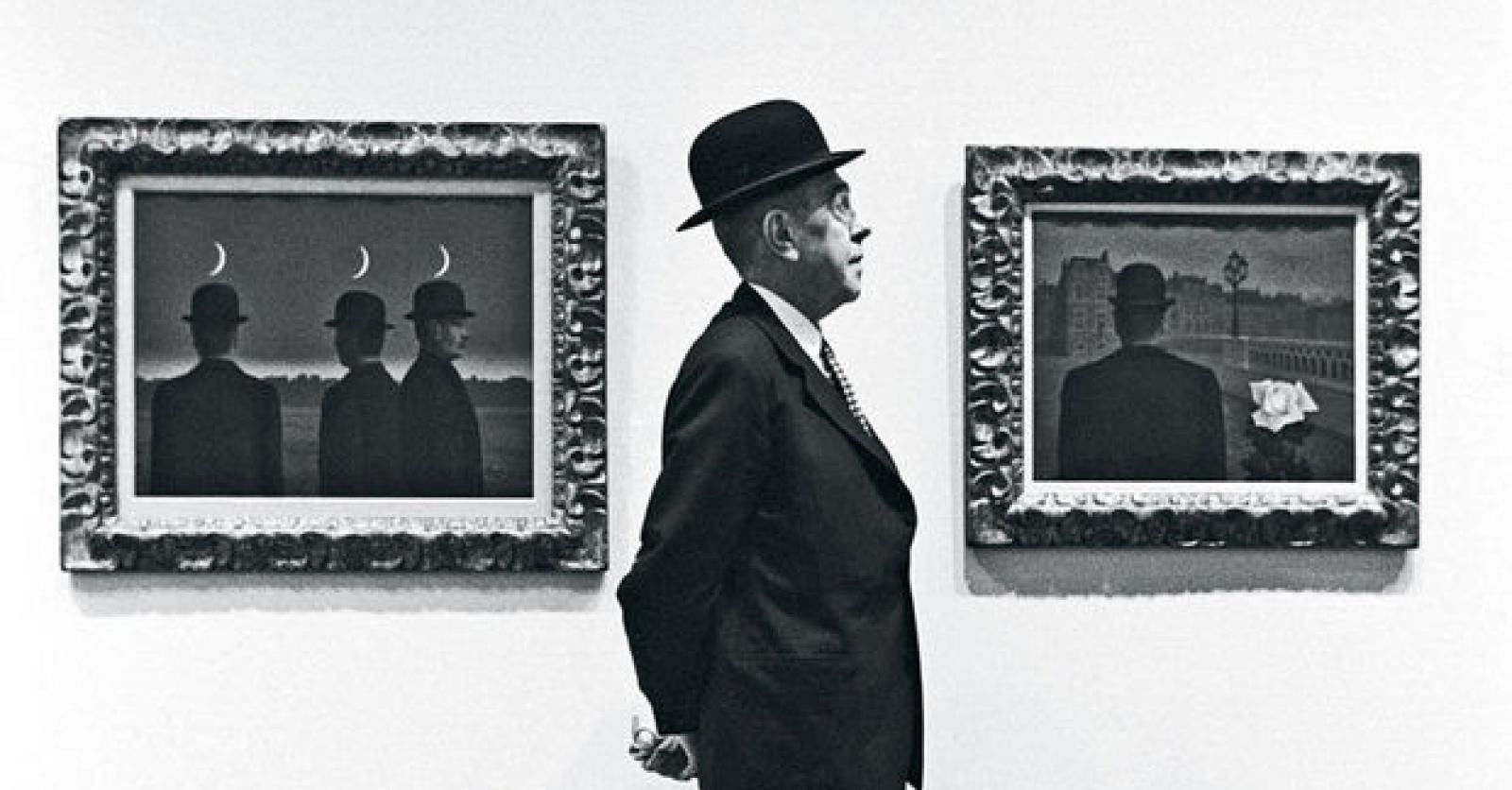 René Magritte, posing in front of his magical realistic paintings
René Magritte, posing in front of his magical realistic paintings
Android Jones; In recent years, magic realism has become popular among contemporary artists who use digital technology to create surreal and dreamlike worlds. One such artist is the American digital painter Android Jones. Jones' work is characterized by vivid colors, intricate patterns, and otherworldly creatures. His art often depicts a futuristic world in which technology and nature are seamlessly integrated.
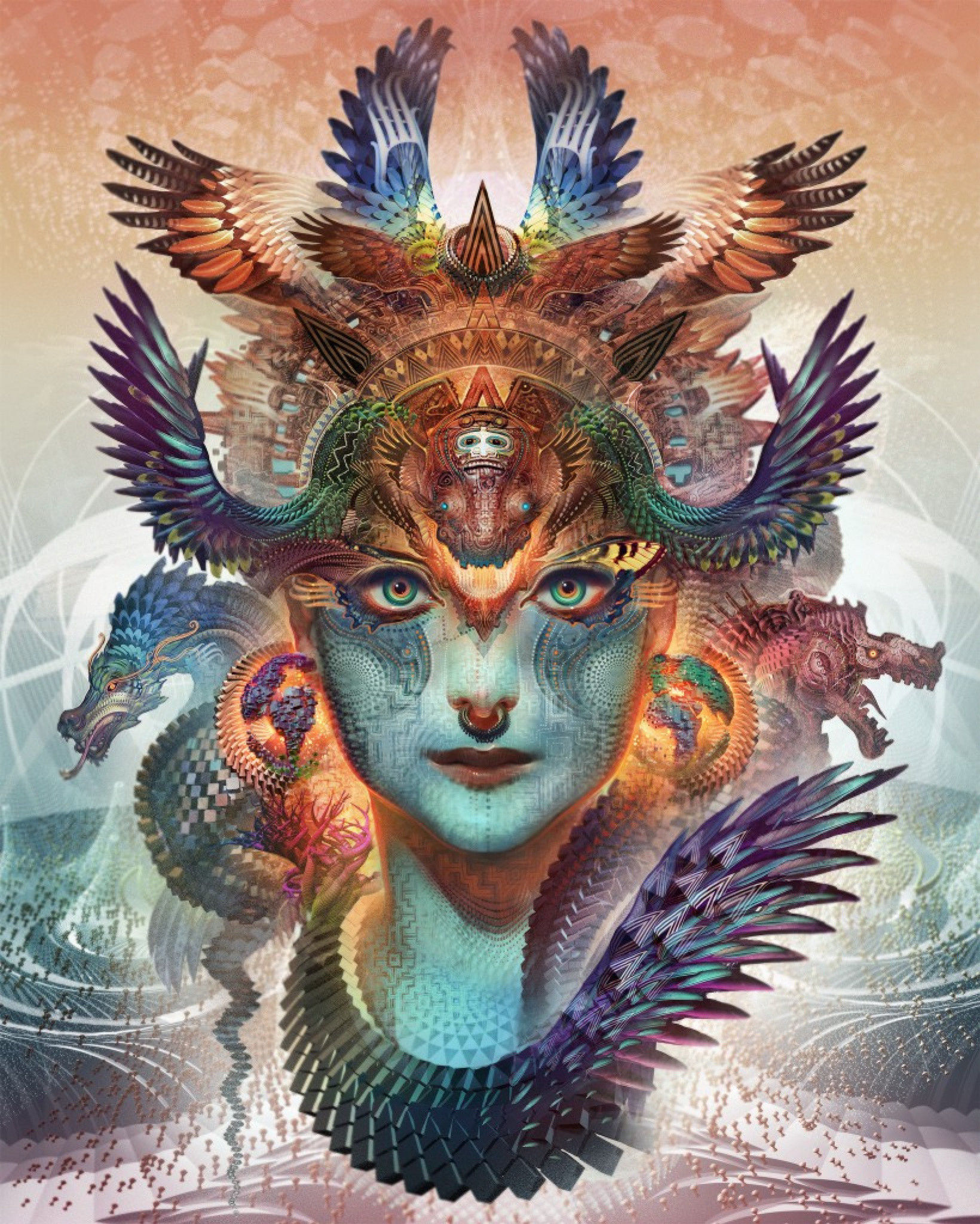 Contemporary Magical Realism, Dragon Dharma, 2012 by Android Jones
Contemporary Magical Realism, Dragon Dharma, 2012 by Android Jones
Main difference with Surrealism
The main difference between magic realism and surrealism in art is the way they approach reality. Magic realism seeks to blend the real with the fantastic in a way that feels natural, while surrealism aims to create a dreamlike or illogical world that challenges the viewer's perception of reality.
In magic realism, the fantastic elements are often rooted in the real world and are presented as if they could actually exist. The goal is not to create a completely separate reality, but rather to create a sense of wonder and mystery within the real world.
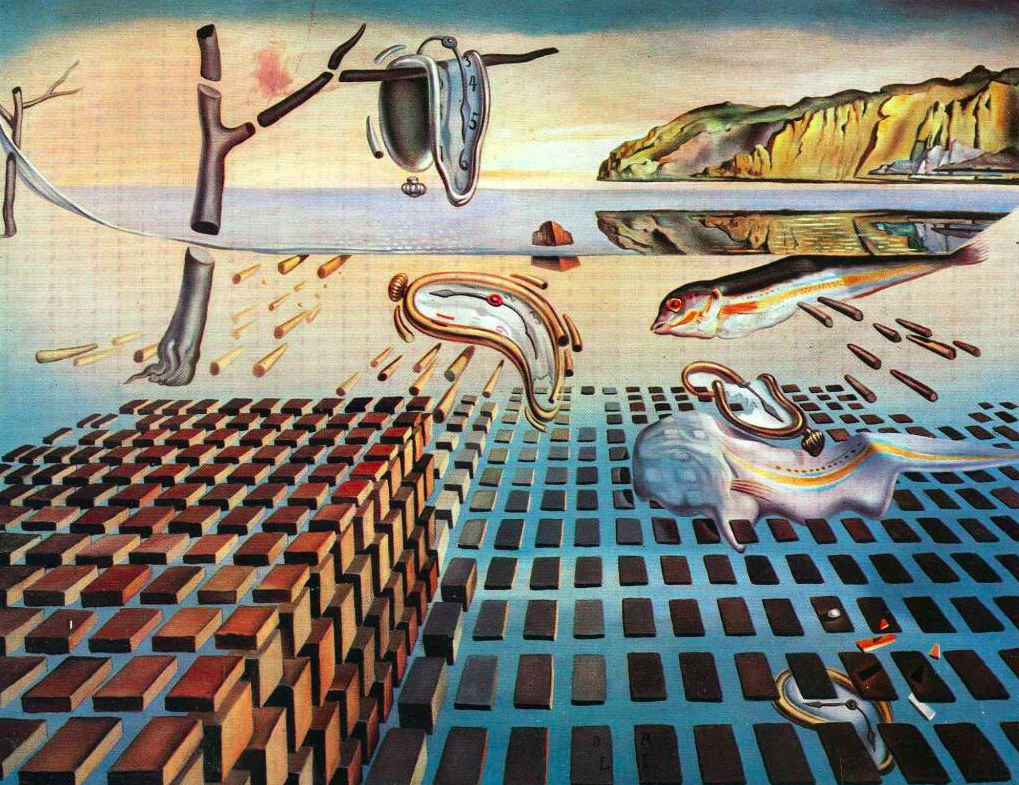 A typical example of Salvador Dali's surrealist painting, Disintegration of the Persistence of Memory (1952-54)
A typical example of Salvador Dali's surrealist painting, Disintegration of the Persistence of Memory (1952-54)
Surrealism, on the other hand, often relies on bizarre or illogical juxtapositions of images and ideas to create a dreamlike or otherworldly atmosphere. The goal is to disrupt the viewer's sense of reality and provoke a deeper understanding of the subconscious mind.
In short
Magic realism is an artistic style that has captivated artists and viewers alike for decades. By combining the fantastic with the real, magic realism in art creates a world that is both familiar and strange, inviting viewers to question their perception of reality.
Whether through painting, sculpture, or digital art, magic realism continues to inspire artists to push the boundaries of what is possible and create truly unique and captivating works of art.
Where to buy Magic Realistisc art?
Here at Gallerease we only present the best works of art from the renowned galleries. Also look below for more available works of art realted to Magical Realism.
*In the header we displayed 'The Waiting Room' by George Tooker (1959)


